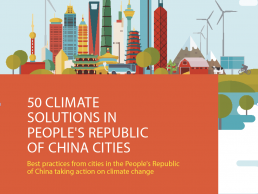First appeared in

Asian Development Bank
50 climate solutions from cities in the People's Republic of China
To cut energy use by one-fifth, large public institutions in Guangzhou were required to conduct energy audits and install efficiency upgrades by the end of 2017.
Guangzhou has instituted a plan requiring large public institutions, such as government agencies, hospitals, schools, and cultural and sports venues, to complete comprehensive energy audits and undertake energy efficiency improvements by the end of 2017. To target the biggest energy consumers, the plan applies to 206 institutions with annual power consumption of at least 1,500 MWh or a gross floor area of 20,000 square meters mandating a 20% reduction of energy demand per unit of floor area after improvements are completed.
98K
TONS OF CO2 EMISSIONS WERE EXPECTED TO BE REDUCED IN 2018 UNDER THE PROGRAM.
The plan builds on impressive results from previous years, in which energy efficiency improvement projects implemented at public institutions in Guangzhou cut annual power consumption by 21,000 MWh and reduced CO2 emissions by 12,000 tons from 2012 to 2015. The intent of requiring energy audits and efficiency improvements for these key energy consumers is to provide examples of green public buildings and formulate the energy consumption standard for all public institutions in Guangzhou.

Guangzhou is the first city in the PRC to call for such a comprehensive and systematic energy efficiency upgrade mandate in its public buildings (photo by Jieshi Zhang).
The Challenge
Buildings, particularly those operated by large public institutions, constitute a major part of energy consumption and greenhouse gas emissions in PRC cities. To address these challenges and ensure that future development is energy efficient, Guangzhou mandated that large, energy-guzzling public buildings must undergo energy retrofits to reduce CO2 emissions.
Co-Benefits
Economic Guangzhou estimates that participating public institutions’ electric bills will be cut by about CNY 100 million annually with full implementation of the program.
Environment As the goal of this project is significant CO2 emissions reductions from buildings, the city anticipates corresponding improvements in air quality.
Social By undertaking these initiatives at major public institutions, visited regularly by thousands of citizens, the project aims to improve public awareness of energy-saving measures.

